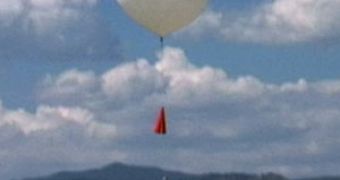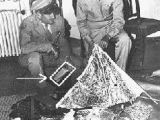Weather balloons are usually helium- or hydrogen-filled balloons which carry instruments on board to send back information on atmospheric pressure, temperature, humidity and wind. They can reach altitudes of 40 km (25 miles) or more and on some occasions, have been sometimes cited as the cause for UFO sightings.
Now, NASA is developing a new type of "smart" balloons that can do the same job of monitoring weather conditions, only they do it around the rocket pads on launch days and now they can self-destruct when they get too far from the base.
The balloons are built using the same technology that developed the smart dust, the miniature sensors capable of analyzing the surrounding environment and sending back data through microtransmitters, while drifting in the wind.
Using solar energy for power, the balloons will be carrying temperature, pressure, humidity and GPS sensors and transmitters that can relay data even if the balloons drift too far away from the launching point.
Unfortunately, these balloons are not 100% reliable, as only three of them were able to transmit data out of the eight initially launched, most likely because of malfunctions to the experimental GPS system.
The self-destruct mechanism is designed to release the helium that insures the flotation and to bring them back to Earth if they get too far, just before a space shuttle is launched.
The price of these complex balloons is not high at all, considering the equipment they're carrying, each of them costing $500, with up to seven of them being launched before the spacecraft launches. But for NASA officials, "collecting the data in this way is much more cost-effective than using aircraft or conventional balloons."
In theory, these balloons could be reused for multiple launches, but in practice, they are blown so far that most are lost.

 14 DAY TRIAL //
14 DAY TRIAL // 
